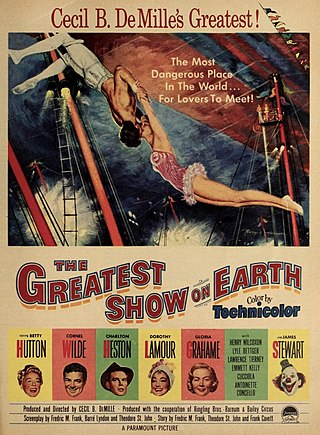
The Greatest Show on Earth is a 1952 American drama film produced and directed by Cecil B. DeMille, shot in Technicolor and released by Paramount Pictures. Set in the Ringling Bros. and Barnum & Bailey Circus, the film stars Betty Hutton and Cornel Wilde as trapeze artists competing for the center ring and Charlton Heston as the circus manager. James Stewart also stars as a mysterious clown who never removes his makeup, and Dorothy Lamour and Gloria Grahame also play supporting roles.

Emmett Leo Kelly was an American circus performer, who created the clown character "Weary Willie", based on the hobos of the Great Depression in the 1930s.

A circus is a company of performers who put on diverse entertainment shows that may include clowns, acrobats, trained animals, trapeze acts, musicians, dancers, hoopers, tightrope walkers, jugglers, magicians, ventriloquists, and unicyclists as well as other object manipulation and stunt-oriented artists. The term circus also describes the field of performance, training and community which has followed various formats through its 250-year modern history. Although not the inventor of the medium, Newcastle-under-Lyme born Philip Astley is credited as the father of the modern circus.

The Hartford circus fire, which occurred on July 6, 1944, in Hartford, Connecticut, was one of the worst fire disasters in United States history. The fire occurred during an afternoon performance of the Ringling Bros. and Barnum & Bailey Circus that was attended by 6,000 to 8,000 people. The fire killed at least 167 people, and more than 700 were injured. It was the deadliest disaster ever recorded in Connecticut.

Lillian Leitzel was a German-born acrobat who specialized in performing on the Roman rings, for the Ringling Brothers and Barnum and Bailey Circus. The inaugural (posthumous) inductee to the International Circus Hall of Fame, Leitzel died in hospital two days after a fall during a live performance.

The Hagenbeck–Wallace Circus was a circus that traveled across America in the early part of the 20th century. At its peak, it was the second-largest circus in America next to Ringling Brothers and Barnum and Bailey Circus. It was based in Peru, Indiana.

Greta Nissen was a Norwegian-American film and stage actress.
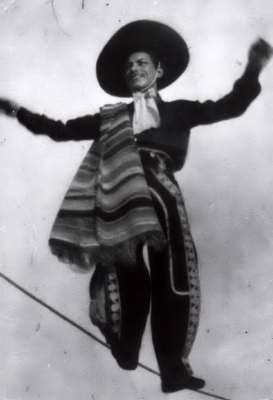
La Carpa García, known in English as the García Brothers Show, was a Mexican American carpa that was active from 1914 – 1947. Carpa García consisted of performers from several families, including Manuel V. and Teresa García, Manolo and Florinda García, Raymond and Virginia García, Rodolfo García, Consuelo and Pilár García, Esther García Robinson, Esperanza,, and Aida García Castro and husband, Alfredo. Teresa García also had three talented children, Rafael, Juan, and Gilberta, from her previous marriage.
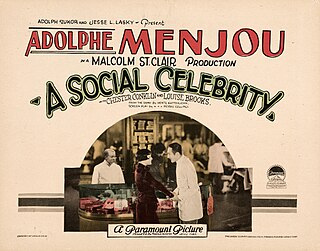
A Social Celebrity is a 1926 American silent comedy drama film directed by Malcolm St. Clair and starred Louise Brooks as a small town manicurist who goes to New York City with her boyfriend, a barber who poses as a French count. The film is now considered lost.
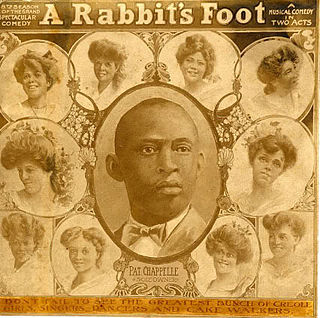
The Rabbit's Foot Company, also known as the Rabbit('s) Foot Minstrels and colloquially as "The Foots", was a long-running minstrel and variety troupe that toured as a tent show in the American South between 1900 and the late 1950s. It was established by Pat Chappelle, an African-American entrepreneur in Tampa, Florida.

The Big Circus is a 1959 American drama film directed by Joseph M. Newman and starring Victor Mature as a circus owner struggling with financial trouble and a murderous unknown saboteur. It was produced and cowritten by Irwin Allen, later known for a series of big-budget disaster films.
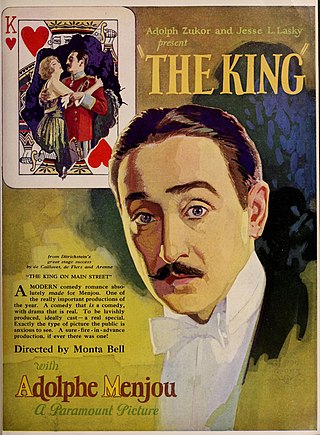
The King on Main Street, also known as The King, is a 1925 American silent romantic comedy film directed by Monta Bell and starring Adolphe Menjou and Bessie Love. The film was adapted for the screen by Bell, and was based on the play The King, Leo Ditrichstein's adaptation of the 1908 French play Le Roi by Gaston Arman de Caillavet, Robert de Flers, and Emmanuel Arène. It was produced by Famous Players–Lasky and distributed by Paramount Pictures.
Barnum's Kaleidoscape was an American circus staged by Feld Entertainment, the owners of Ringling Bros. and Barnum & Bailey Circus, at a start-up cost of $10 million. It ran for one season, 1999–2000. Inspired by both European traditions and the contemporary circus movement, it was the first Ringling show to be held under a tent since 1956 and also its first one-ring presentation in more than a century. The tent was carpeted with wood flooring and amenities to create an intimate setting with seating for 1,800 on cushioned seats and sofas and no one further than 50 feet from the circus ring. Besides traditional circus fare like popcorn upscale items such as cappuccino and veggie wraps were offered. The show consisted of 62 performers, 54 crew members, 8 horses and 27 geese, with 50 trucks involved in moving it from site to site.

George Michael Rosener was an American film actor and writer. He also wrote and acted in the Frank Buck serial Jungle Menace.
Buddy's Circus is a 1934 Warner Bros. Looney Tunes cartoon, directed by Jack King. The short was released on November 8, 1934, and stars Buddy, the second star of the series.

One in a Million is a 1936 American musical comedy film directed by Sidney Lanfield and starring Sonja Henie, Adolphe Menjou and Don Ameche. It marked the Hollywood debut of the ice skater Henie. It was the first of a series of Twentieth Century-Fox musicals made by Henie, although she had previously made a silent film in her native Norway. The film features footage from the 1936 Winter Olympic Games.

William Flynn is a fictional character from the 1926 play Chicago, written by Maurine Dallas Watkins, and its various derivative works and remakes.
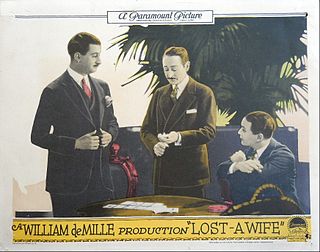
Lost: A Wife is a 1925 American silent comedy film directed by William C. deMille and written by Clara Beranger based upon a play by Clare Kummer and Alfred Savoir. The film stars Adolphe Menjou, Greta Nissen, Robert Agnew, Edgar Norton, Mario Carillo, and Genaro Spagnoli. The film was released on July 13, 1925, by Paramount Pictures.
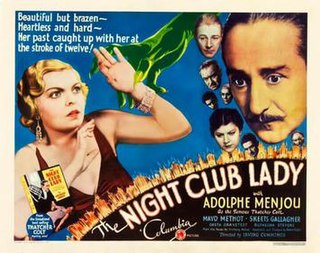
The Night Club Lady is a 1932 American pre-Code mystery film directed by Irving Cummings and starring Adolphe Menjou, Mayo Methot and Richard 'Skeets' Gallagher. It was followed by a sequel The Circus Queen Murder in 1933 with Menjou reprising his role. A third, unrelated film featuring Thatcher Colt, The Panther's Claw, was released in 1942.

Norma Fox, also known as La Norma, is a Danish-born aerialist and trapeze artist who performed throughout Europe before moving to the United States with her husband, the Frenchman André W. Fox, in 1949. In 1952, she performed as a stand-in for Betty Hutton in the film The Greatest Show on Earth. La Norma retired in 1974 and now lives in Sarasota, Florida, where a "Ring of Fame" marker records her circus achievements.


















